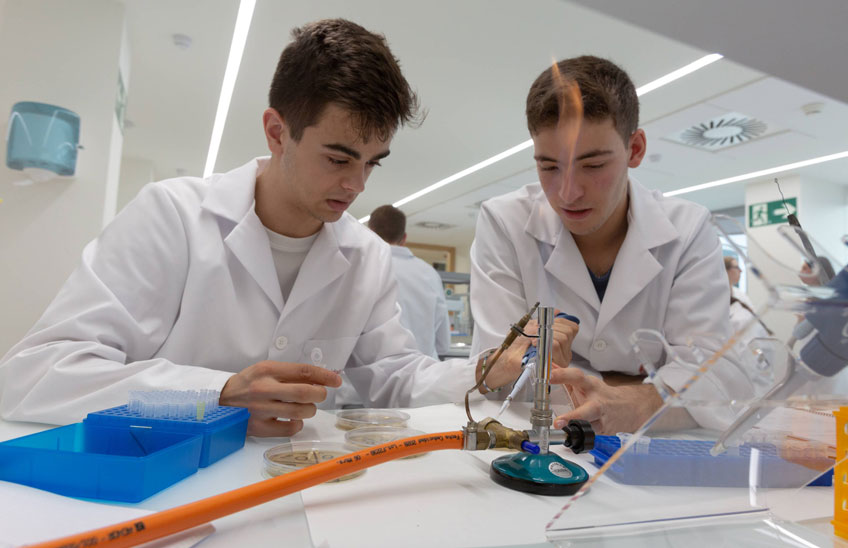Innovative artificial intelligence analysis uncovers new uses for drugs
Researchers at the Cima University of Navarra confirm that this technique improves the prediction of drug-protein interactions and could accelerate the development of treatments.

FotoManuel Castells<br>/Idoia Ochoa, Antonio Pineda-Lucena, Jesús de la Fuente, Uxía Veleiro, Mikel Hernáez y Silve Vicent, del Cima Universidad de Navarra y Tecnun-Escuela de Ingeniería de la Universidad de Navarra
08 | 05 | 2025
Researchers from Cima University of Navarra and Tecnun- School of Engineering of the University of Navarra, in partnership with Stanford University (USA) and the Instituto de research Sanitaria La Fe de Valencia (IISLAFE), have developed an innovative technique using artificial intelligence (AI) to discover new uses for existing drugs.
The study was based on a pioneering analysis that reviews and improves current techniques for identifying how drugs interact with proteins in our body. In this context, scientists have discovered a new interaction between an existing drug and a protein that could revolutionize drug repositioning.
"Traditional methods can overestimate accuracy due to data leakage problems, i.e., when the information that the model should learn to predict is already inadvertently present in the data it is trained on. This can make the model appear much more accurate than it really is, but instead of learning general patterns, it simply memorizes information that it should not know beforehand," explains Mikel HernáezMikel Hernáez, principal researcher in the the Machine Learning in Biomedicine group at Cima and director of the work.
More robust learning
To address this drawback, scientists have proposed an inductive AI approach , which allows artificial intelligence systems to learn more robustly and predict new interactions without contaminating the results with prior information.
To do so, they have developed a new technique of "negative undersampling", which selects interactions that are more difficult to predict during the training of artificial intelligence models. "This approach improves the ability of the models to identify connections between drugs and proteins that previously went unnoticed," says Jesús de la source, first author of the work. To validate these findings, they performed cellular assays at Cima and subsequently confirmed drug-protein binding by surface plasmon resonance (an optical sensing technology) at IISLAFE.
"Our analysis shows that by reducing data leakage and improving the selection of difficult cases, we can identify real drug-protein interactions, which facilitates the search for new uses for existing drugs," explains Dr. Hernáez. Nature Machine Intelligence.
Accelerating the development of effective treatments
Exploring new applications for existing drugs can accelerate access to effective treatments. "These drugs have already been shown to be safe in humans, thereby significantly reducing the time and costs associated with development new compounds from scratch."
This pioneering analysis represents a significant advance in the application of artificial intelligence to medicine, opening up new possibilities for combating diseases and developing innovative therapies for the benefit of society.
The researchers have made available to the academic community all the necessary resources to reproduce their experiments, which will also facilitate the design of future models. At the same time, they have made public a tool called GUESTwhich facilitates the assessment of this subject methods to check for data leakage. This initiative promotes transparency and partnership in the field of drug finding .



